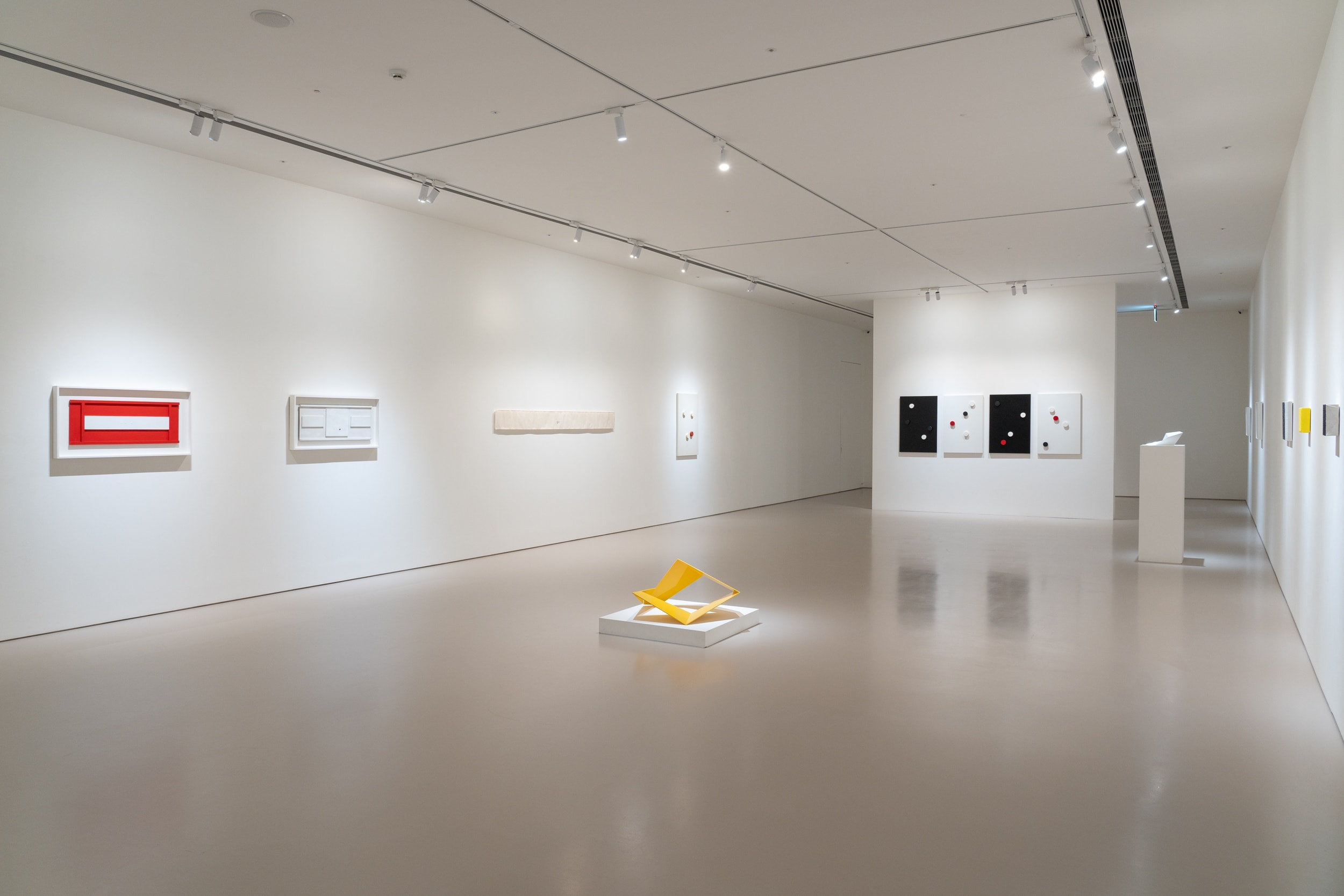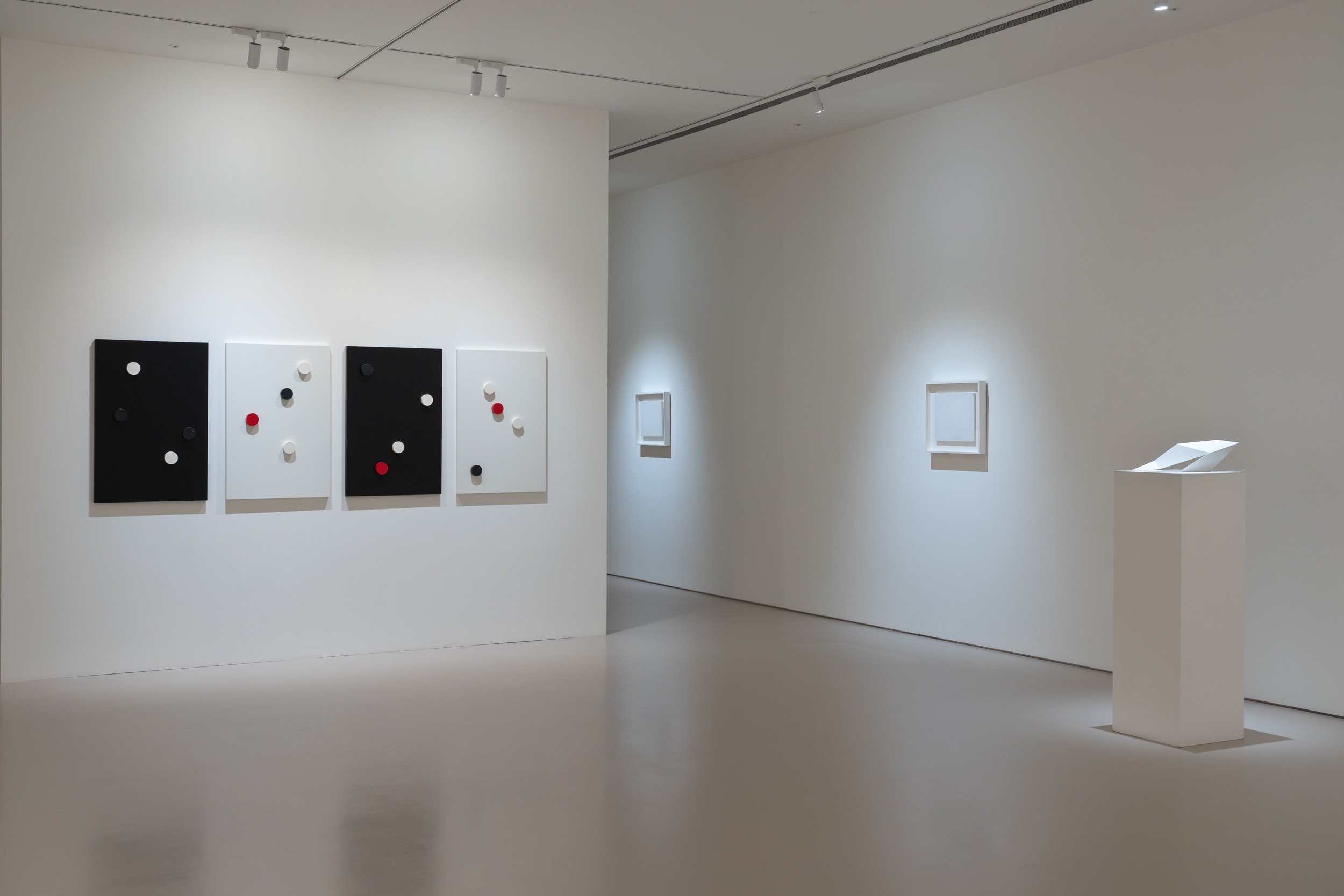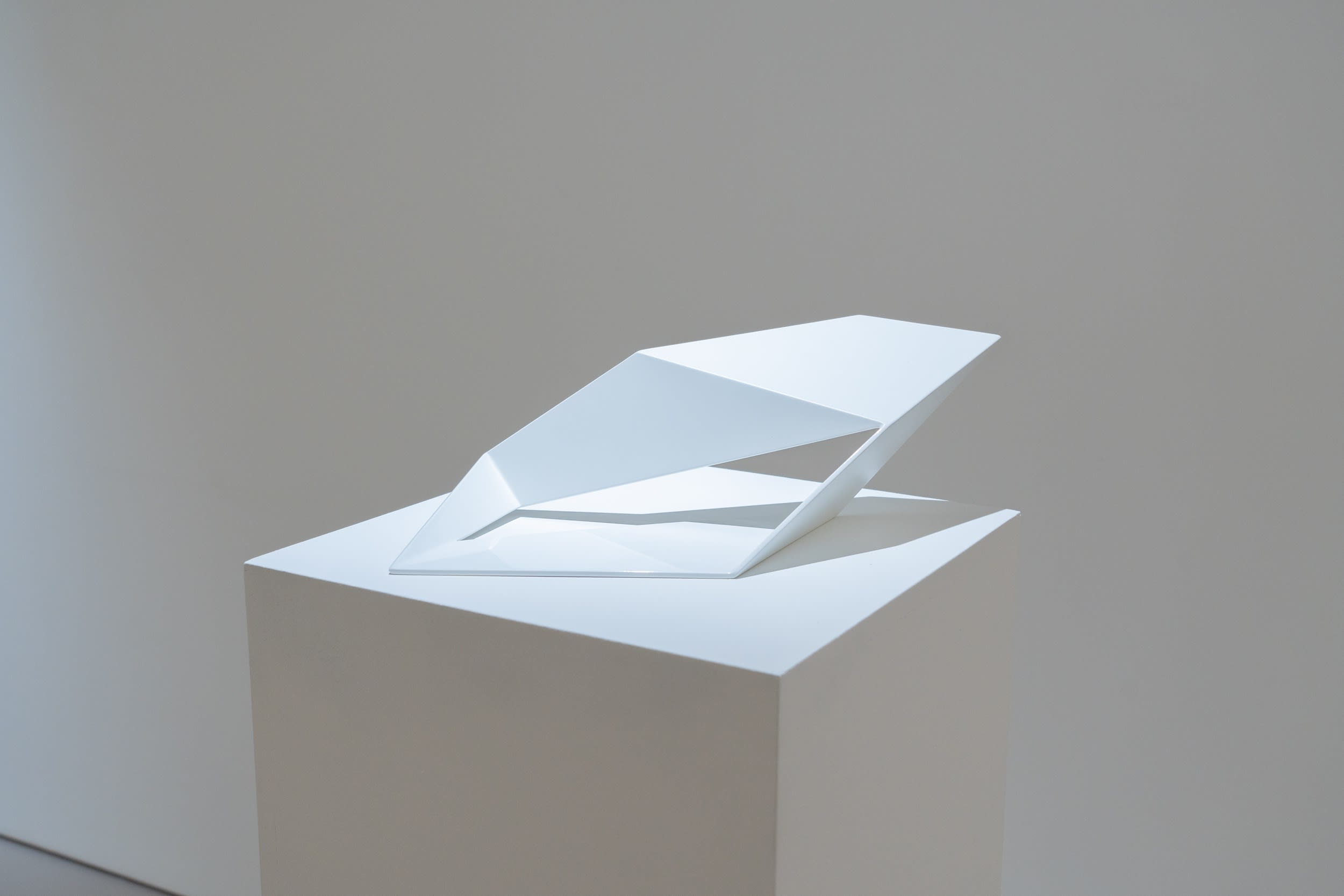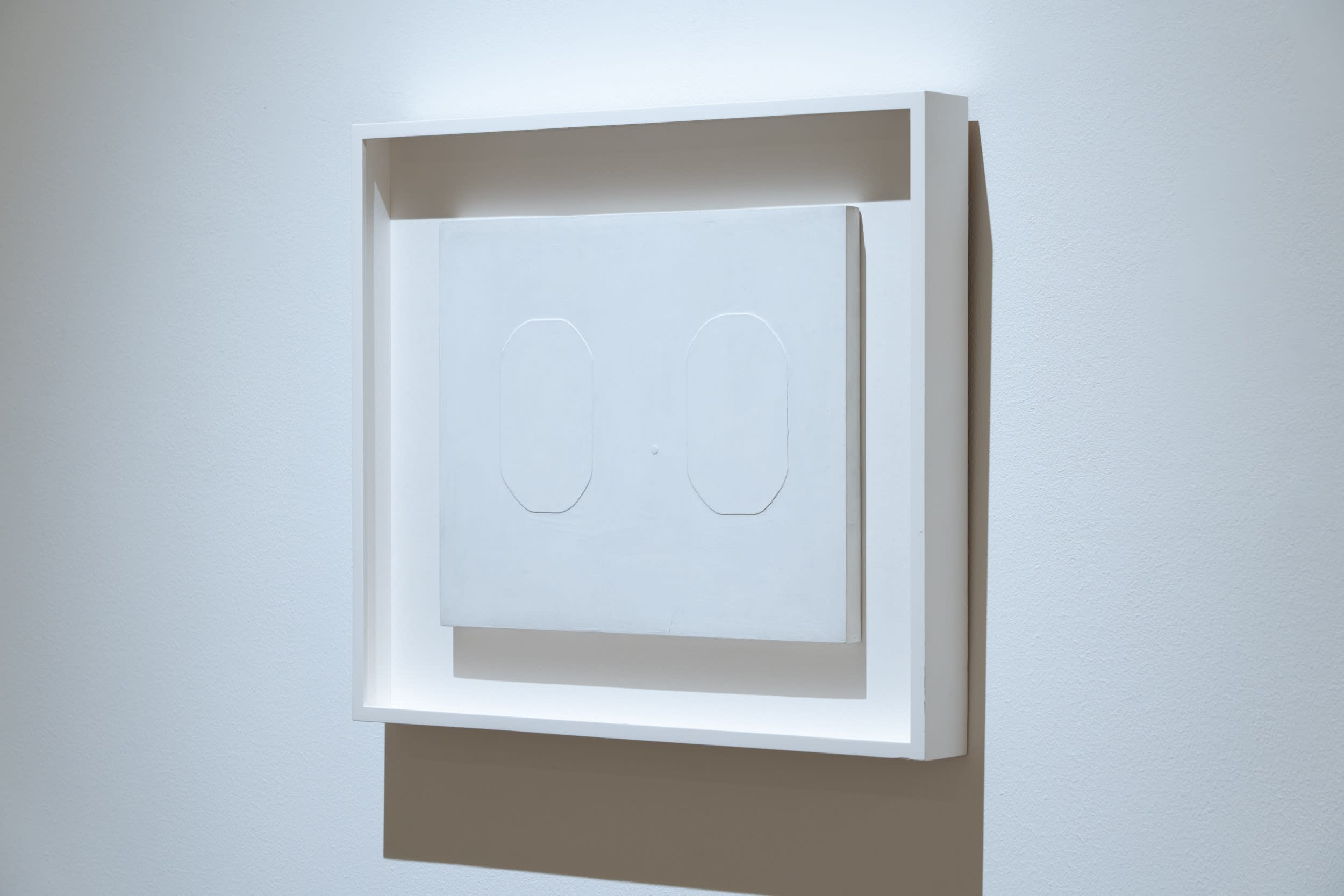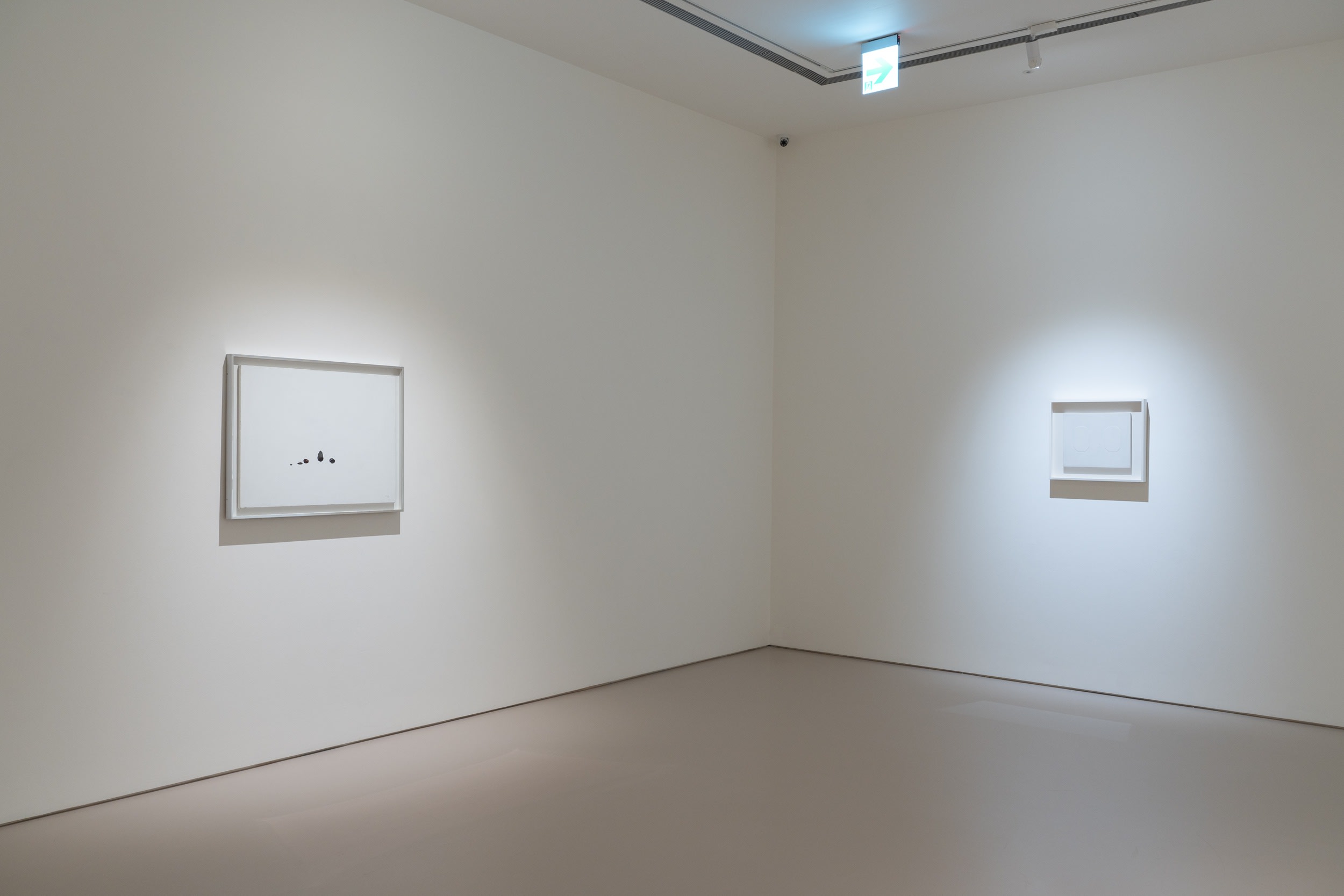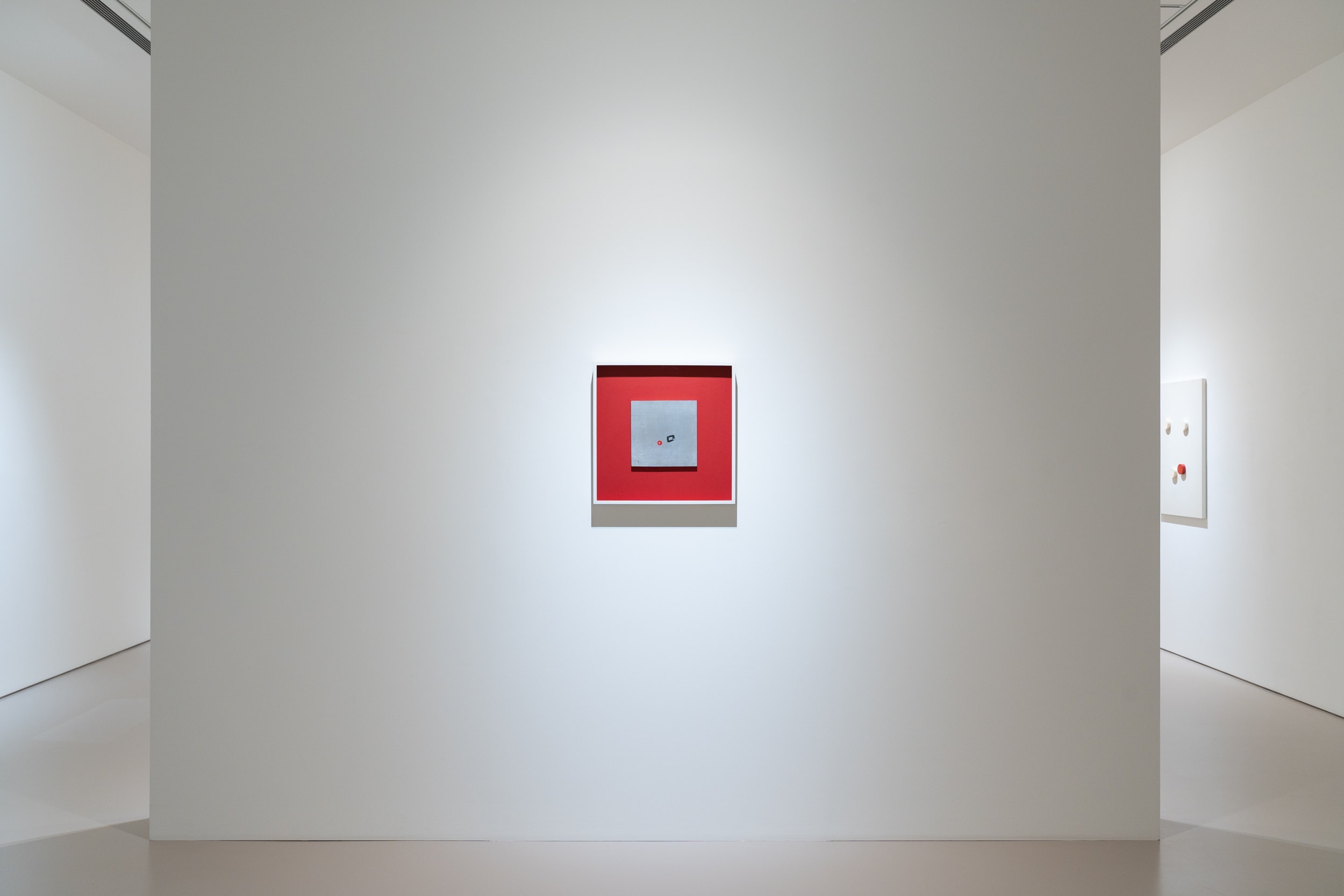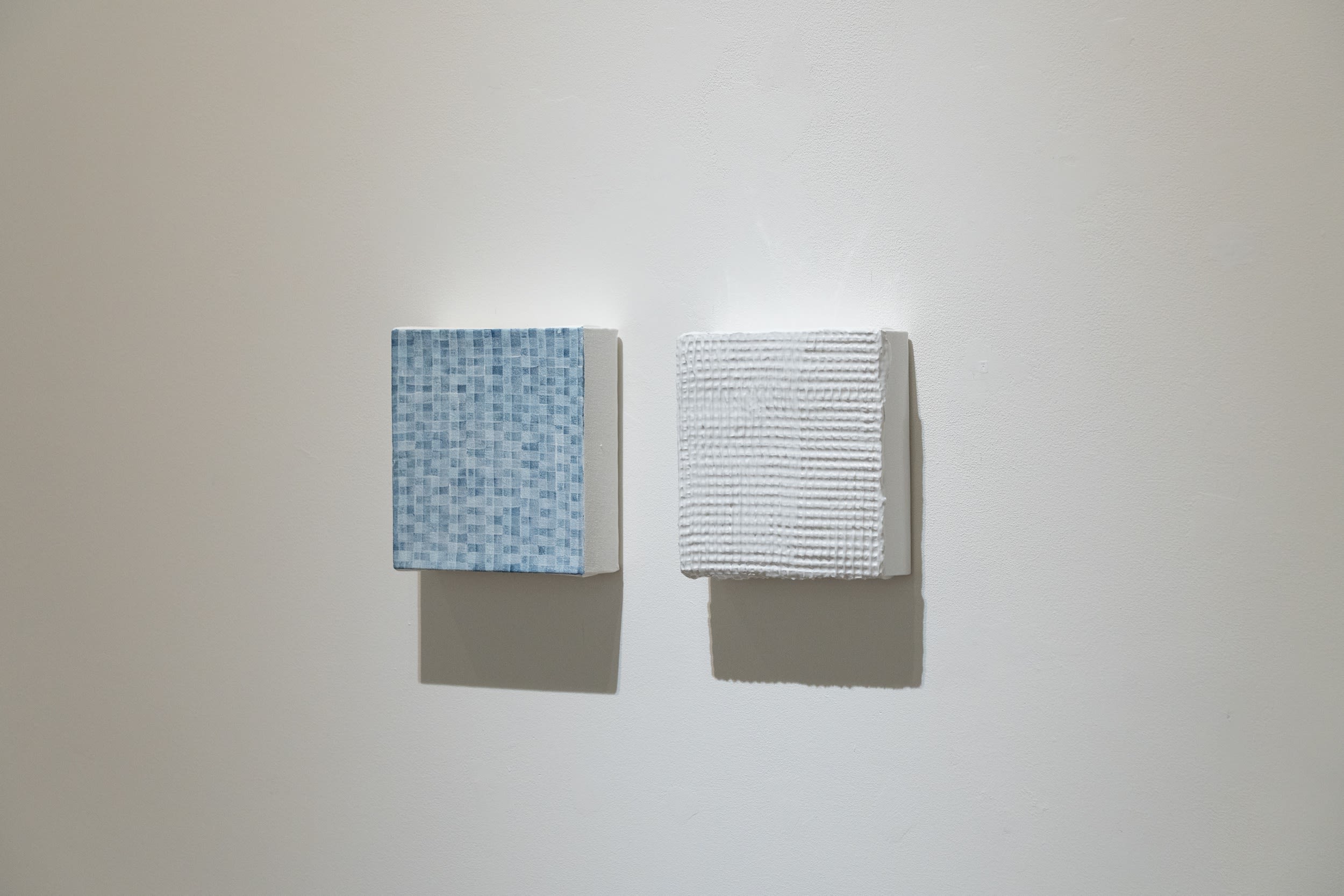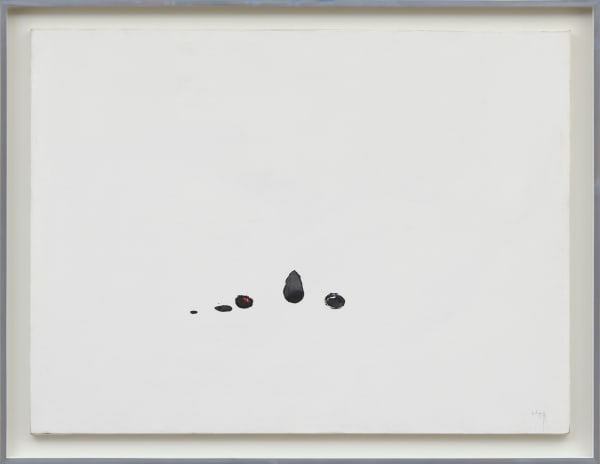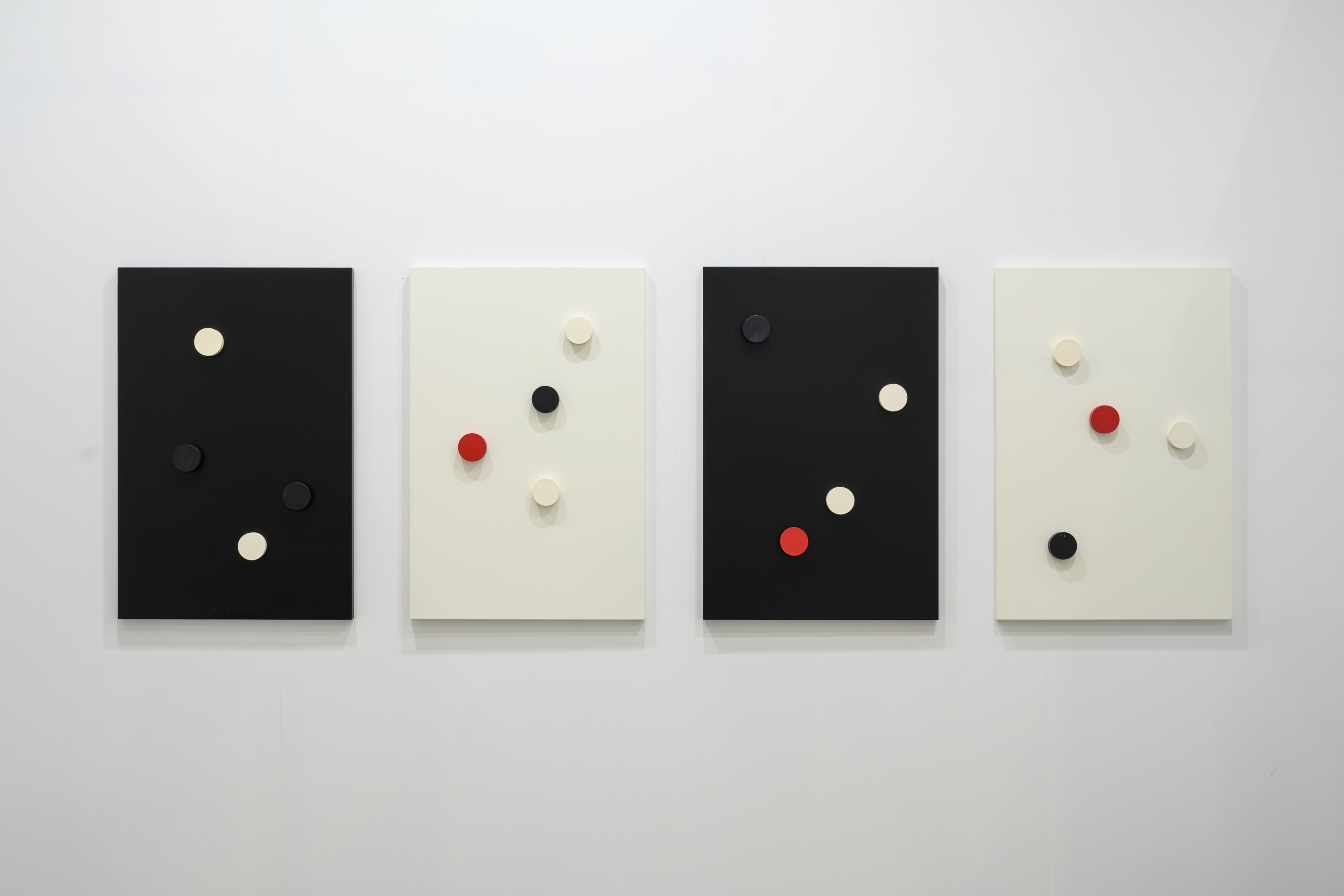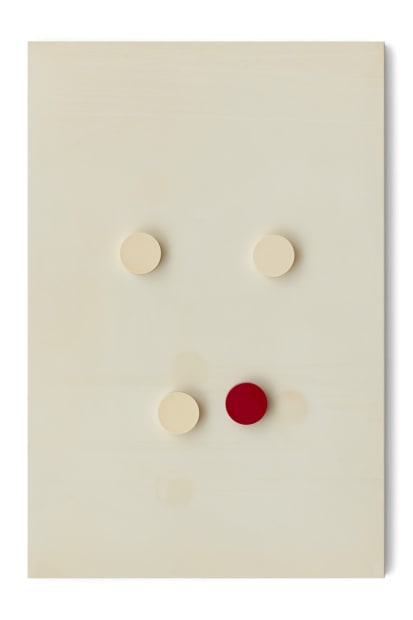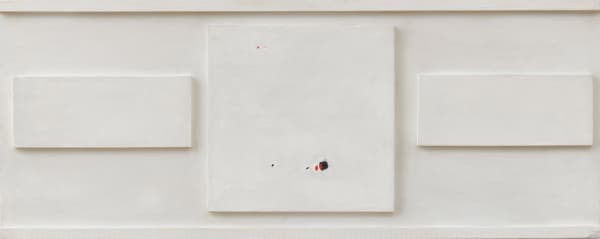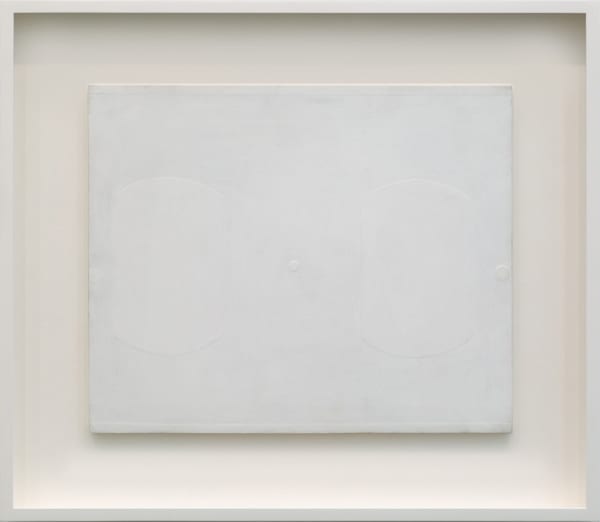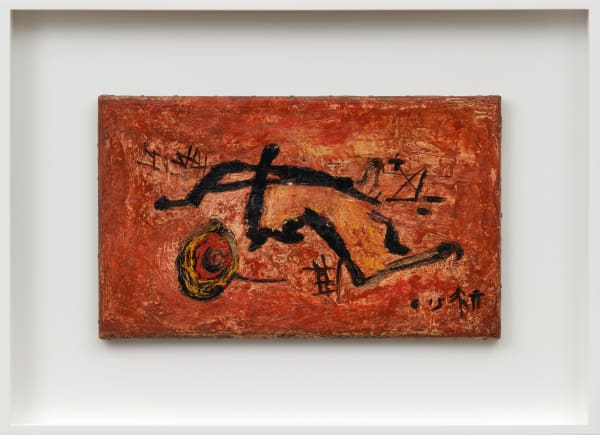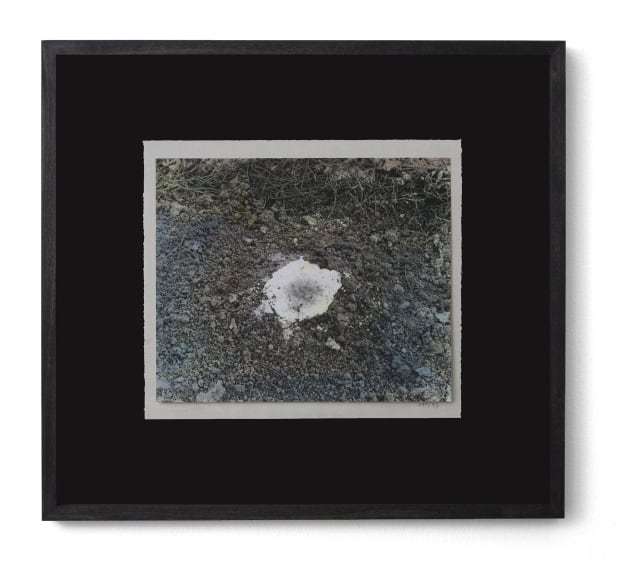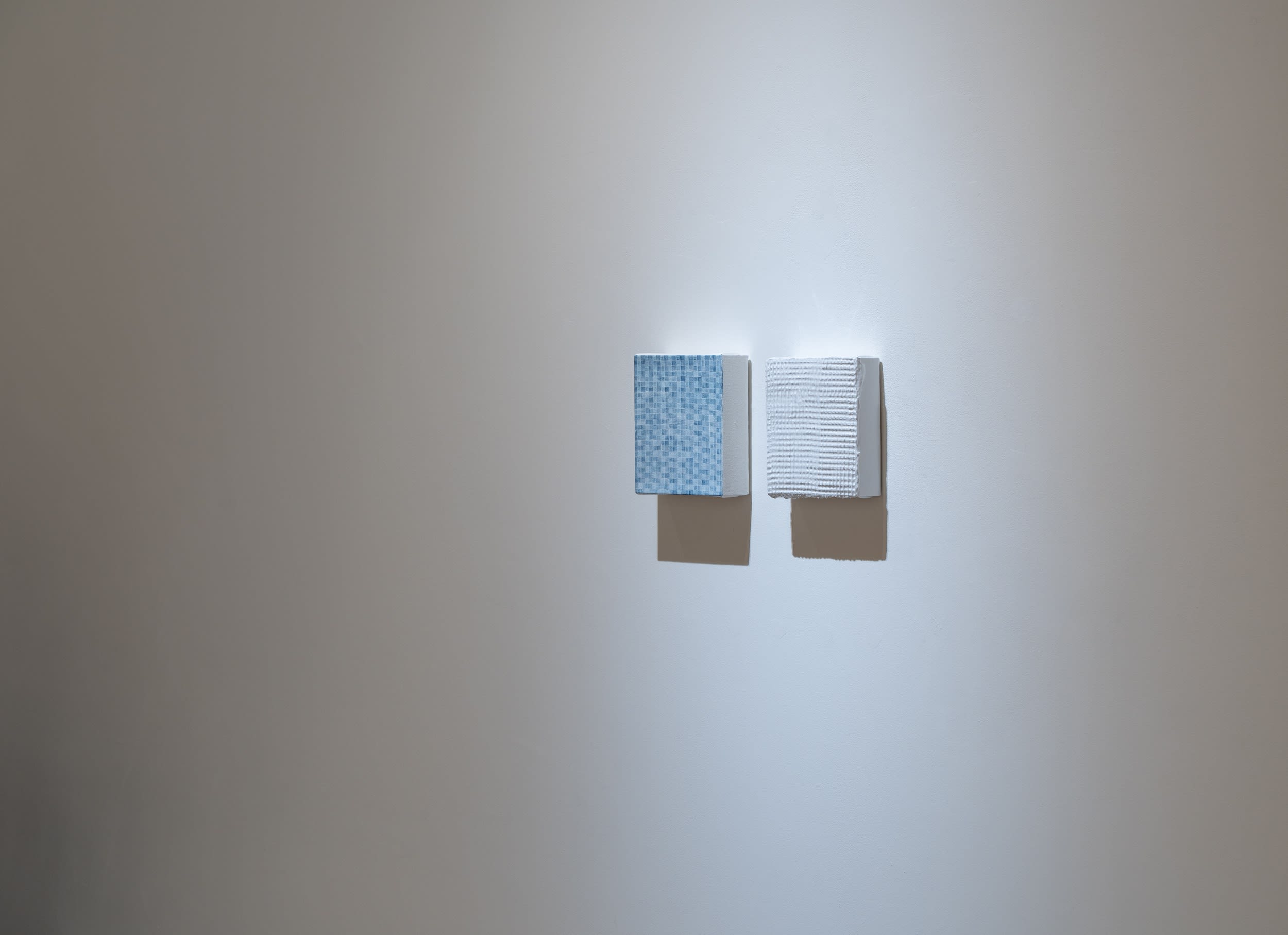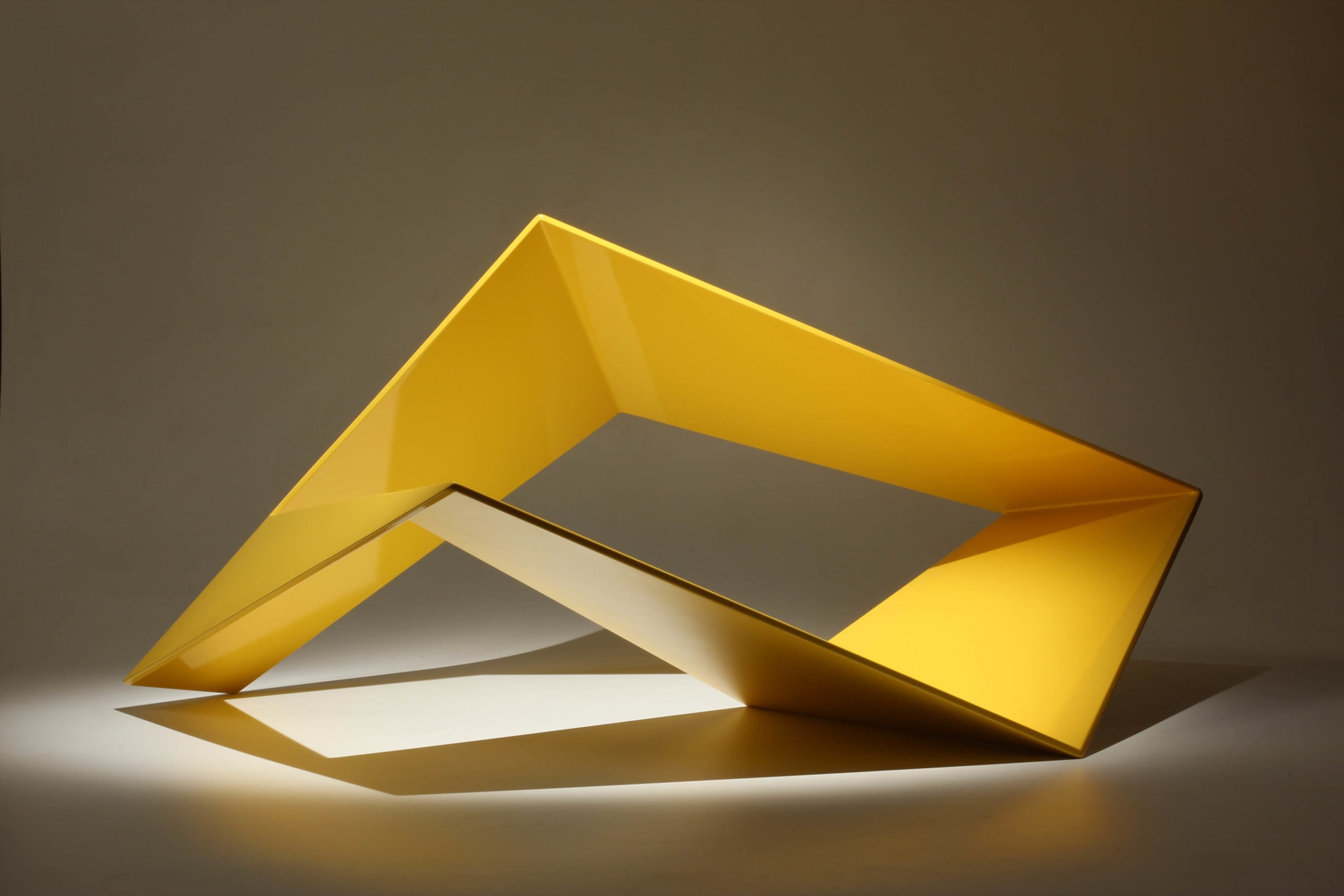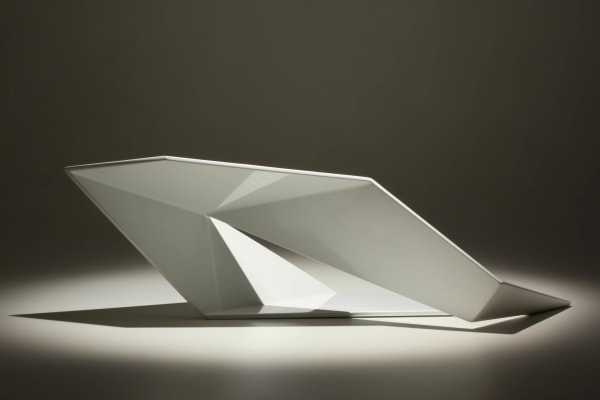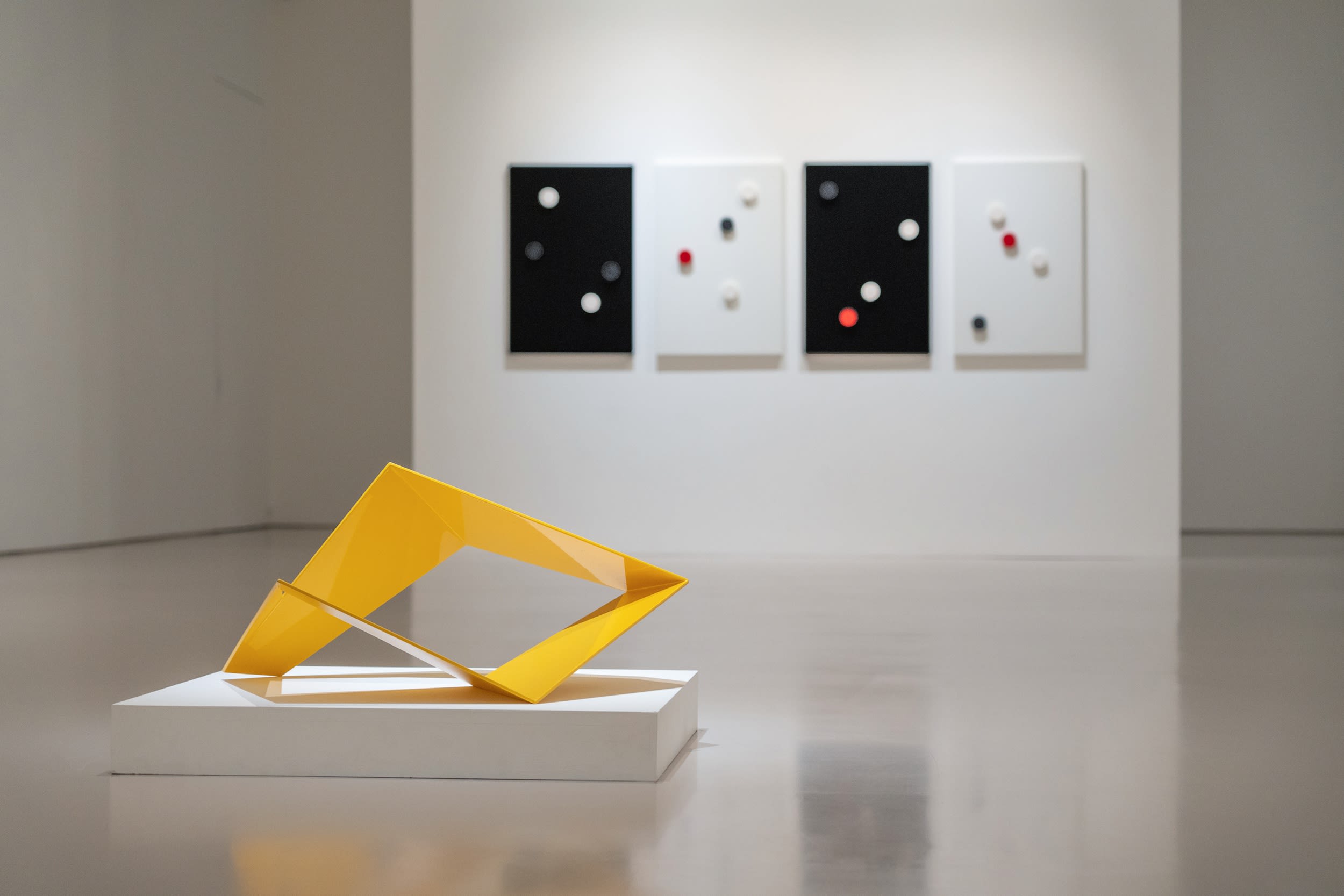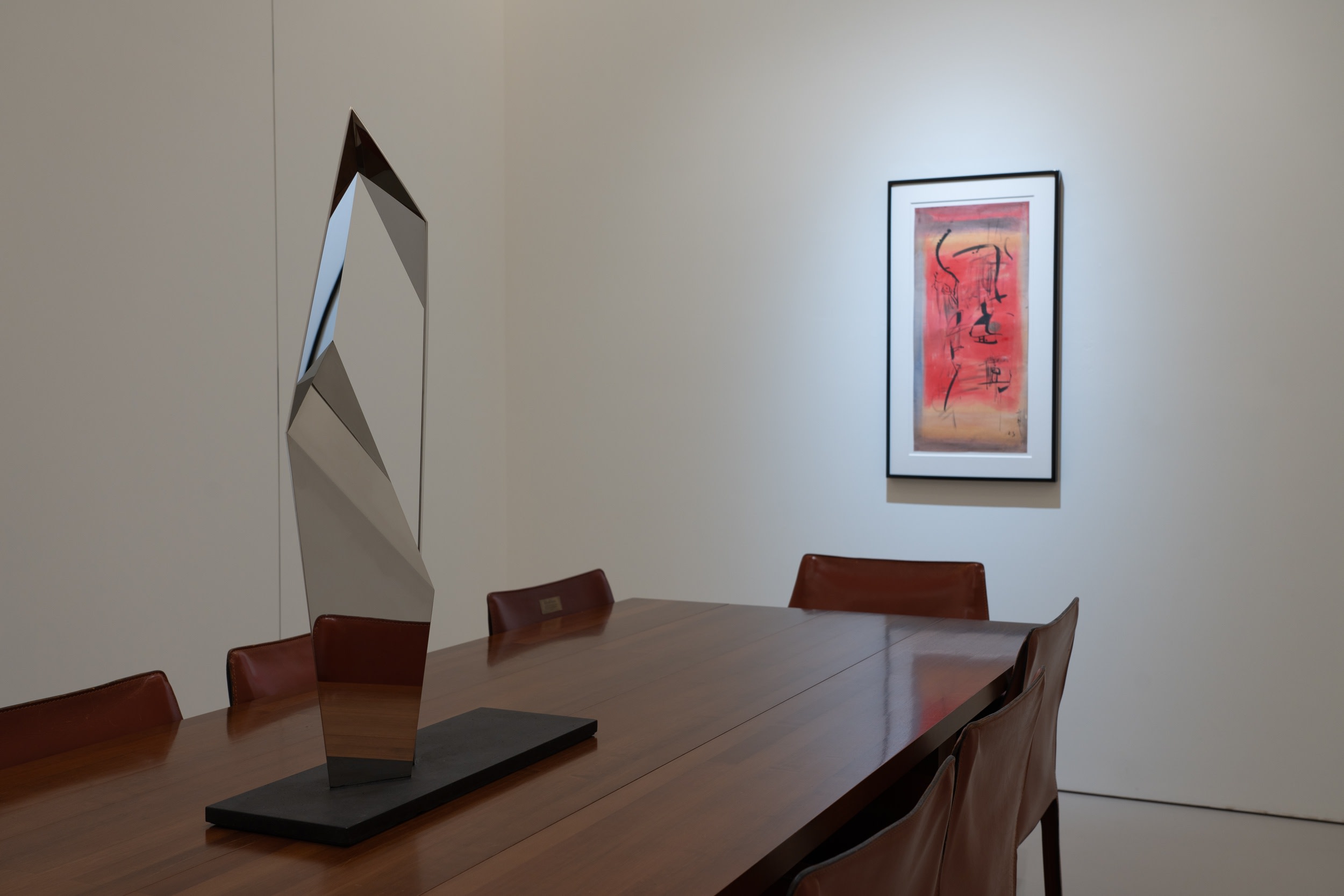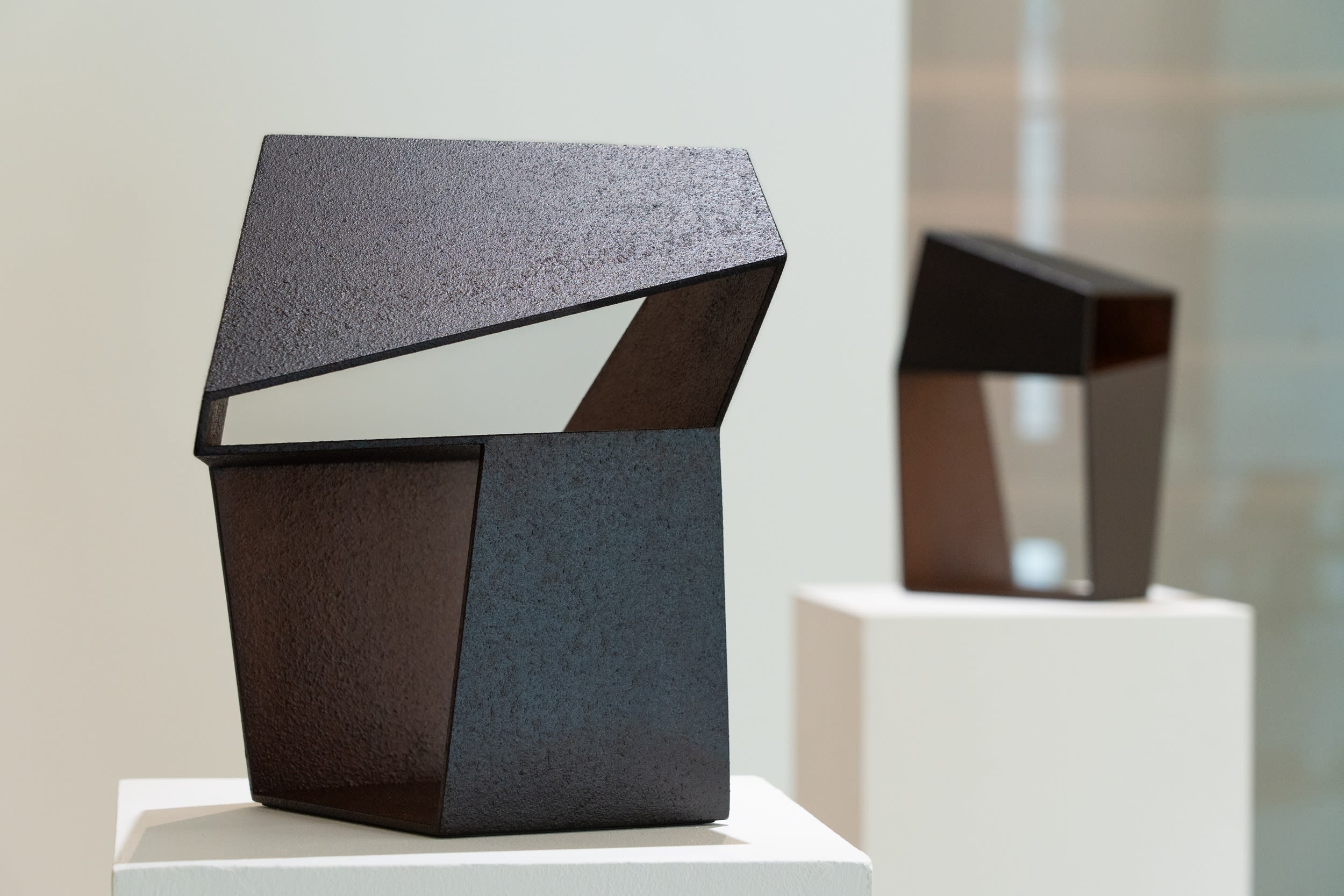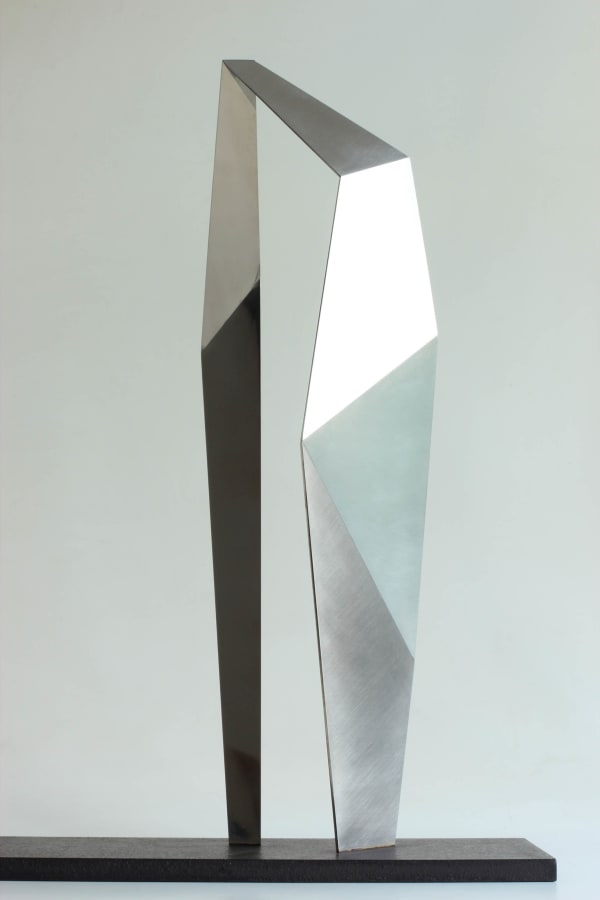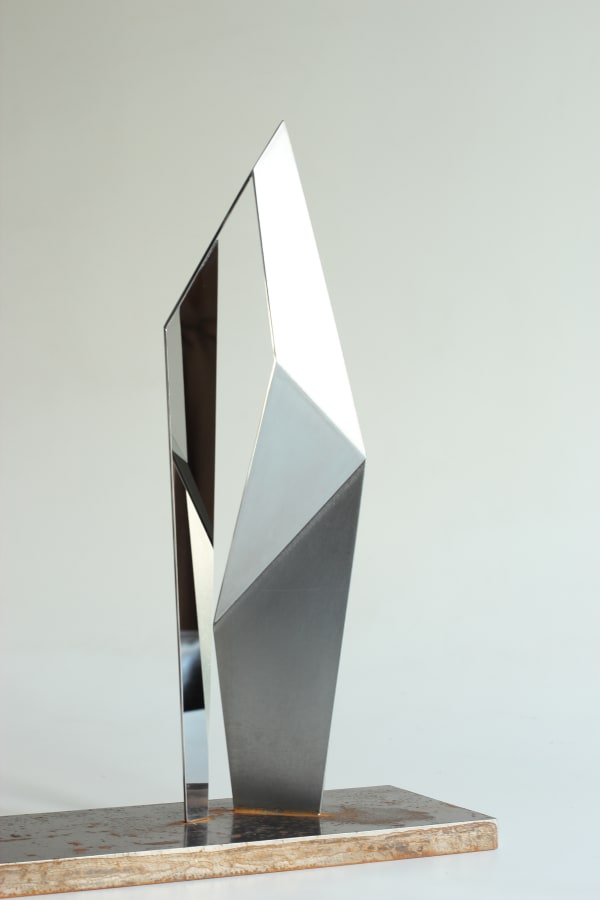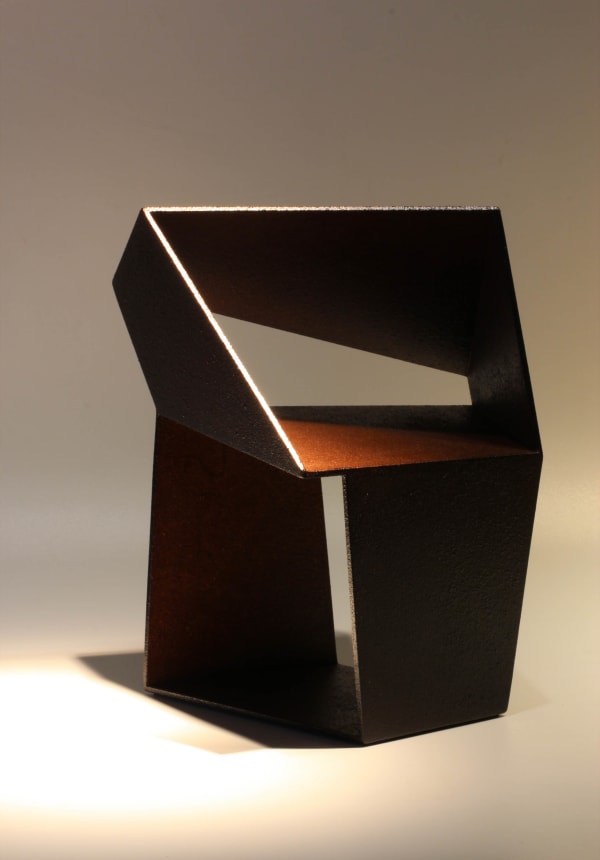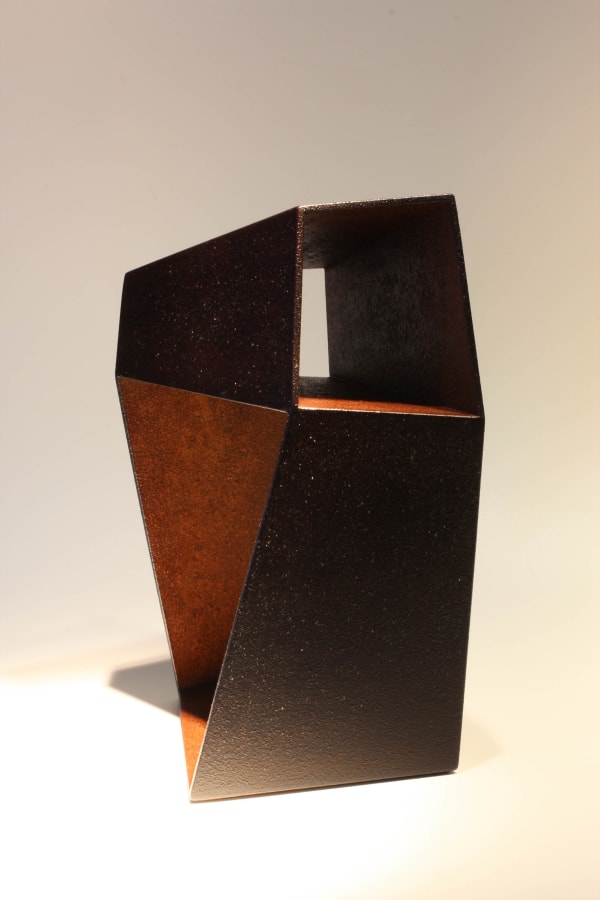-
ESLITE GALLERY is set to showcase a joint exhibition in July, featuring the artwork of three remarkable artists: LI Yuan-chia, Yi-Chen HUNG, and Szumin KUO. Each bringing to the fore their unique take on abstract creations, their artistic exploration traverses various mediums, from painting and sculpture to mixed media and hybrid forms of painting and sculpture. Employing the fundamental elements of dots, lines, and planes to carve out spatial constructs, their artistic pursuits unravel the essence of art and ignite boundless imagination in the viewers. The pieces on display enter into an interactive dialogue with each other, eloquently expressing the intrinsic poetry of abstract art.
-
Installation views
-
李元佳 LI YUAN-CHIA
1929 Born in Guangxi, China. 1949 Moves to Taiwan with the survivors of the soldiers‘ families of the Nationalist Revolutionary Army. 1951 Enters the Arts Department of Provincial Taiwan Teachers College (now known as Department of Arts and Design National Taipei University of Education). 1952 Studies painting at Li Chun-Shan’s studio and makes his first abstract work. 1956 Establishes of the Ton Fan Group with Hsiao Chin, Ho Kan, Yan Hsia, Wu Hao, Chen Tao-ming, Hsiao, Ming-hsien and Ouyang Wen-yuan. 1957 Li is invited, with Ton Fan, to exhibit at the 4th São Paulo Bienal, Brazil. 1959 Li originates the idea of the Point. 1961 Hsiao Chin, who establishes “Il Punto” group, invites Li to join him in Milan. 1962 Li arrives in Italy in late 1962. 1965 Li is invited to show his work at Signals in London, where he participates in “Soundings Two”. 1966 Li participates in “3+1” at Signals in London. 1966 Moves to London, UK. 1967 Li forms an association with the Lisson Gallery. And his first show “Cosmic Point” opens at the Lisson. 1968 Li’s second show “Cosmic Multiples” at the Lisson. 1969 “Golden Moon Show” opens at the Lisson Gallery. 1972 - 1982 Establishment of the LYC Museum & Art Gallery. 1989 Li is invited to participate in “The Other Story: Afro-Asian Artists in Postwar Britain”. 1994 Li dies in Carlisle, UK. (1)
-
A point is the beginning of everything and also the end. _ LI Yuan-chia
-
LI’s creative practice encompassed numerous mediums, including ink wash, oil painting, monochrome painting, photography, mixed media, and performance art. His most iconic concept, the “cosmic point”, evolves from a minuscule calligraphic mark to a circular representation, a visual art element symbolizing the universe. His works from the 1960s, on view in this exhibition, reflect his dedication to fusing Eastern philosophies with Western art forms, conveying deep oriental philosophical ideas through abstract imagery.
-

李元佳 LI Yuan-chia
點冊 Punto Booklet, 1963墨、油彩/布、紙 Ink, oil on paper and cloth mounted on paper
8 3/8 x 53 1/8 in
21.2 x 135 cm -
From 1962 to 1966, Li lived in Bologna, Italy, where he produced a great quantity of minimalist works using ink and paper. — The traditional album leaf format includes several independent paintings mounted and assembled into a folio. Li takes this a step further by suggesting readymade, accordion-format albums of blank pages on which one could draw. In other words, as objects they embody a documentary concept that is only partially visible at first glance. Each page or panel is a stand-alone work, but when the entire folio is opened, relationships among the panels become evident, and therefore, the albums do not merely form a single collection but also suggest their own inherent plurality. The paper itself calls attention to its own "objecthood" by retaining three-dimensional creases, while also serving as support for two dimensional drawings. This technique both presents Li's exploration of painterly space and, more interestingly, suggests the possibility of a documentary reading. Furthermore, it is here that we get a glimpse of Li's later evolutions from painting to objects and finally to his surroundings. (2)
-

李元佳 LI Yuan-chia
藝術去哪了 Dove va l'arte (Where art goes), 1960s墨/紙/畫布 Ink on paper, lined on canvas
17 3/8 x 165 3/8 in
44 x 420 cm -

李元佳 LI Yuan-chia
無題 Untitled, 1961墨/絹/裱於宣紙 Ink on silk mounted on backing Xuan paper
8 1/4 x 90 1/2 in
21 x 230 cm -
In 1968, LI Yuan-chia left London and moved to Cumberland. He held a studio exhibition in October, showcasing his new works created locally in Boothby. He became increasingly interested in interactive and participatory structures and invented movable magnetic points. With pushpins, these magnetic points could be positioned anywhere on a room's wall, allowing for a variety of compositions:
(3)
If you ask me where my art is going after today, my answer is “Toyart”, which means: my works seem like “toy” – good for everyone, form children to old men (women).
-

李元佳 LI Yuan-chia
宇宙點 Cosmic 'Point' Multiples, 1968活動磁鐵/鋼板 Movable magnetic points on steel panels
35 7/8 x 24 in/ each, set of 4
91 x 61 cm/ each, set of 4 -

-
Around 1965, Li's art vocabulary shifted from abstraction to geometric in style; a shift related to changes in his immediate environment. Li was staying at the studio of furniture designer Dino Gavina, where wood and sheet metal were readily available. He started experimenting with low relief sculpture, which suggested an industrial-design style, mostly piecing together objects with hard-edged geometries and either affixing or painting his characteristic "point" on the surface. Li mounted these objects in a specific way, such that traditional painting frames were seemingly absorbed into the artworks to become part of their geometric design. The idea of the frame was no longer to highlight the artwork as subject, but rather to induce the viewer to notice that these objects mounted on the wall formed relationships with their surroundings, a shift which was also evidenced by the fact that Li did not sign these works like he signed paintings. For Li, painting went from being a two-dimensional object delimited by a frame and signature to an art object within an environment, like a sculpture sans pedestal. Confronted with the exhibition, one readily took the venue and its objects together as an installation, or even interpreted the objects as decoration for the room, and in this way, paintings were subtly transformed into art objects, a move which presaged Li's site-related turn. (4)
-

-

-
Footnotes/ References: (1)(3)(5)(6). Exhibition catalogue of “View Point-A Retrospective of Li Yuan-Chia” at the Taipei Fine Arts Museum, PART 3, p.102-112 (2)(4). Yu Wei, “LI YUAN-CHIA, Art and Artefact”, Exhibition catalogue of View Point-A Retrospective of Li Yuan-Chia, PART 1, p. 85-89. (7). Li Yuan-chia, Water+Colour=56/7-Li Yuan-chia, Cumbria: LYC Museum, 1977.
-
洪藝真 YI-CHEN HUNG
Yi-Chen HUNG was born in Tainan in 1971 and passed away in Taipei in 2011. In the early 1990s, HUNG pursued art studies in the UK, earning a PhD in Fine Art from the University of Reading, before returning to Taiwan in 2004. While studying in the UK in 1999, HUNG began experimenting with expanding and challenging the conventional belief that painting was confined to expression or representation solely on a canvas. This exhibition highlights her adept deconstruction of painting’s basic components—canvas, paint, and frame—in an attempt to redefine the customary physical confines of painting. Through this endeavor, she fashioned conceptual and architectural spaces, traces of which can be perceived in some of the showcased artworks. She later ventured to engage in a profound dialectic of “What constitutes an original work?” She utilized fiberglass to replicate her works on canvas or made her own mold to reproduce the texture of the canvas with acrylic paint and transplant this layer onto another canvas, challenging the viewer’s visual discernment. This way, she revisited painting in a groundbreaking manner.
-
Installation views
-
-
 洪藝真 Yi-Chen HUNG無題 Untitled, 2007; 2009壓克力顏料/畫布+陶 Acrylic on canvas / fired clay7 7/8 x 7 7/8 x 2 1/8 in; 7 1/2 x 7 1/2 x 1 3/4 in, set of 2
洪藝真 Yi-Chen HUNG無題 Untitled, 2007; 2009壓克力顏料/畫布+陶 Acrylic on canvas / fired clay7 7/8 x 7 7/8 x 2 1/8 in; 7 1/2 x 7 1/2 x 1 3/4 in, set of 2
20 x 20 x 5.4 cm; 19 x 19 x 4.5 cm, set of 2Private collection -
 洪藝真 Yi-Chen HUNG無題 Untitled, 2009壓克力顏料/畫布+烤漆/玻璃纖維 Acrylic on canvas / spray paint on FRP11 3/4 x 11 3/4 x 1 1/8 in/ each, set of 2
洪藝真 Yi-Chen HUNG無題 Untitled, 2009壓克力顏料/畫布+烤漆/玻璃纖維 Acrylic on canvas / spray paint on FRP11 3/4 x 11 3/4 x 1 1/8 in/ each, set of 2
30 x 30 x 2.8 cm/ each, set of 2Private collection
-
-
郭思敏 SZUMIN KUO
Szumin KUO’s creation presents concise and elegant geometric sculptures. Be it the Metamorphosis, Inversion, or Meandering series, her background in architecture shines through the cool sleek metal, exuding refined artistry in her pieces. KUO, born in Taipei in 1964, received her master’s degree in architecture from Yale University in New Haven, Connecticut. She harbors a deep passion for artistic creation, using metals like stainless steel and iron to forge geometric forms. After several steps of surface treatments, including painting, rusting, rust prevention, scraping, and polishing, she brings forth a non-figurative sense of spatial order. KUO believes that “the allure of abstraction lies in its boundless room for imagination.” The abstraction she delves into is not a finite construct, but a dynamic, intangible space extending along the trajectories of light and shadow. The created space invites viewers into a vast, fantastical realm, enabling them to uncover a multitude of possibilities within the simplest of structures.
-

郭思敏 Szumin KUO
境外之石#12 Metamorphosis #12, 2011烤漆/鐵 Enamel on iron
24 1/4 x 31 1/2 x 25 5/8 in, Ed. 2/6
61.7 x 80 x 65 cm, Ed. 2/6NT$ 375,000 -
Installation views
-
-
Joint Exhibition of LI Yuan-chia, Yi-Chen HUNG and Szumin KUO
- Opening: July 1, 2023丨3-5pm
-
Date: July 1 - August 5, 2023
-
Address: ESLITE GALLERY∣B1, No. 88, Yanchang Rd., Xinyi Dist., Taipei City 110055, Taiwan (eslite spectrum Songyan Store)
-
Opening Hours: 11am-7pm, Tuesday – Saturday (closed on Sunday and Monday)
Joint Exhibition of LI Yuan-chia, Yi-Chen HUNG and Szumin KUO
Past viewing_room


